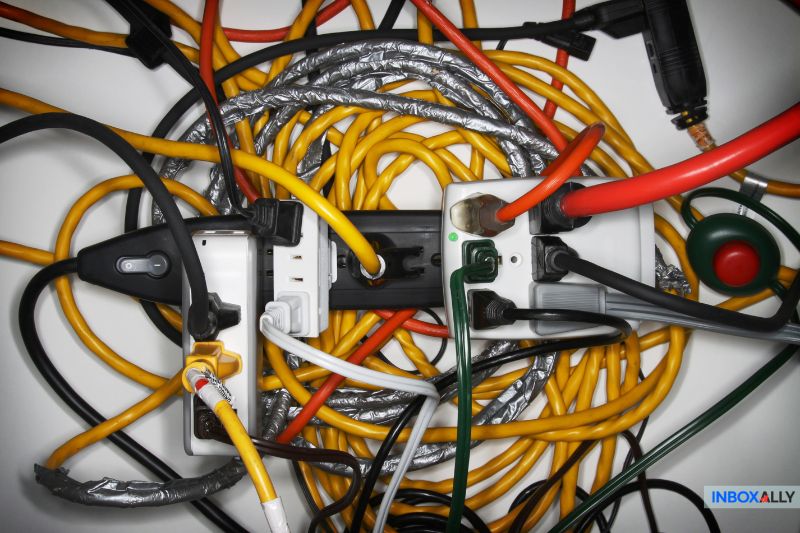WooCommerce powers over 4.6 million active stores as of early 2025. That’s about one in every three ecommerce sites built on WordPress. It’s open-source, endlessly customisable, and used by everyone from kitchen-table side hustlers to global e-commerce giants.
But with that scale comes risk, especially when core systems like email start failing.
If your store’s receipts, password resets, or order updates are landing in customers’ spam folders (or not arriving at all), customers stop trusting your store. And trust, once gone, doesn’t come back easily. Neither does lost revenue.
Most store owners assume WooCommerce emails just work. But with today’s aggressive spam filters, clunky mail servers, and weak out-of-the-box defaults, “just working” isn’t a given.
So what’s behind WooCommerce email failures, and what does it take to fix them? Let’s take a look…
“Sent” Doesn’t Mean Delivered
When WooCommerce marks an email as “sent,” it only means the message was handed off to your server’s mail function. Whether it actually landed in someone’s inbox is a whole different story. It could’ve been flagged, bounced, or quietly dumped into the spam folder, and you’d have no clue.
Most WordPress setups rely on the default wp_mail() function, which wraps around PHP’s mail() method. It’s a barebones system with no authentication, no tracking, and barely any headers. It technically sends emails, but it doesn’t meet the standards modern email providers require.
If you’re on shared hosting, it’s even worse. Your emails are sent from the same server as dozens (or hundreds) of other websites. When one of them inevitably starts sending spam, the shared IP gets blacklisted. WooCommerce won’t warn you, so you’ll never even know unless a customer complains.
This is why “sent” is a misleading metric that gives a false sense of security.
What you really need is delivery visibility: was your email accepted, flagged, or blocked, and why? That insight only comes once you’ve moved beyond default WordPress mail tools and set up proper email infrastructure (SMTP, authenticated services, etc.).
We’ll get there. But first, let’s look at how content alone can hurt your deliverability.
How Spam Filters Judge Your Emails (Without You Knowing)
Spam filters don’t just look for suspicious keywords anymore. Now they scan your emails looking at code, layout, sending patterns, sender reputation, and even how people react after opening (or not opening) your message.
Design is a big factor. WooCommerce emails often come with cluttered or outdated code, especially if you’ve customised them or added plugins that change the layout. Spam filters don’t like messy HTML, broken tags, or missing headers that should be there.
Next, if your email is primarily images, or worse, just one big image with barely any text, spam filters assume you’re trying to hide something. Similarly, if your “from” name is “Support Team” but the email is coming from “noreply@weird-domain.biz,” that’s another obvious trigger.
Spam filters also look at how you send. Are your emails going out in bulk all at once? Are they being triggered by bots or fake form submissions? Are you sending receipts and shipping notices with the same subject line to hundreds of addresses? These patterns don’t look organic and can hurt your chances of delivering emails.
It’s rarely just one thing. Deliverability problems build slowly from a combination of issues. Fortunately, most are fixable with some awareness and better email habits.
If you’d rather hand it off to professionals, use InboxAlly to test, fix, and retrain your email service provider to trust your emails again. Start your free trial and see how fast you land back in the inbox.
The Case for Using SMTP (Instead of Your Web Server)
WordPress was never built to be an email delivery system, and web hosts (especially on shared hosting) aren’t doing you any favours either. That’s why serious ecommerce businesses rely on SMTP (Simple Mail Transfer Protocol).
Tools like WP Mail SMTP, Post SMTP, or providers like SendGrid connect your WordPress site to a proper SMTP server that’s actually designed for the job. Instead of your hosting server fumbling around as a mailman, SMTP lets a specialised provider handle emails for you. And that alone makes a big difference.
Email providers like Gmail and Outlook see SMTP-sent emails as more legitimate because they come with proper headers, authentication, and stable IPs. You don’t have to mess with DNS records right away (though you should eventually); switching your WooCommerce emails to SMTP can solve many problems overnight.
Even if you change nothing else, moving your WooCommerce emails off your web server and onto SMTP will often fix deliverability issues. It’s the single most valuable upgrade you can make.
Plugin Conflicts and Over-Customisation Can Break Your Emails
WooCommerce’s flexibility is a double-edged sword. The same freedom that lets you tweak templates, add upsell plugins, or customise checkout flows can also wreck your email structure.
Visually, your emails might look fine. But when you layer on a ton of plugins, things can break. You might still get an email preview, but under the hood, spam filters are seeing:
- Outdated or broken HTML
- Weird inline styles from plugins
- Extra headers or bloated layout code
None of these look trustworthy to email providers. Even one bad template can pull down the reputation of your entire domain.
Things get worse when plugins fight each other. Plugins that auto-embed tracking pixels, shorten links, or duplicate content across multiple emails dont sit well with ESPs, especially if the changes aren’t consistent across templates.
If you’re running SMTP and have decent engagement, but still landing in spam, check your templates. Not how they look, but how they’re built. View the source code. Validate the HTML. See what your email contains.
Or better yet, run a proper email tester like InboxAlly’s. It scans for structural issues and flag-raising patterns before the message goes live so you can fix what’s broken before the inbox decides for you.
Is Your Hosting Environment Hurting Your Reputation?
Why do a lot of WooCommerce sites run on shared hosting? Because it’s cheap, easy, and fine for a lot of things. But email deliverability isn’t one of them.
Shared hosting means your site shares the same server (and IP address) with many other websites. If one of them starts sending spam or gets flagged for shady behaviour, your emails could end up blacklisted just by association.
MXToolbox or Google Postmaster Tools can show you what’s really going on with your domain and IP. And if the damage is already done, you can use InboxAlly’s deliverability service to rebuild your reputation so your emails start landing again where they’re supposed to.
Some premium hosts handle all this stuff for you. They isolate risky users, configure DNS records like SPF (Sender Policy Framework) and DKIM (Domain Keys Identified Mail) automatically, and give you better deliverability by design. Others have built-in SMTP or partner with services like Google Workspace and Mailgun.
What you should take away from this is that a cheap host might actually be costing you more. If deliverability matters (and it always does), make sure your hosting setup can keep up.
Why Sending to the Wrong People Hurts Everyone
You might think it’s harmless to send emails to your whole list, even if some people never open them. Worst case, they ignore it… right?
Not quite.
Every time someone doesn’t open, click, or engage, it chips away at your sender reputation. And over time, that disinterest teaches spam filters to treat all your emails with suspicion, even the important ones like receipts or shipping updates.
This is especially true for WooCommerce stores sending to:
- Old customers who haven’t opened anything in months
- Addresses with typos or errors
- People who never actually opted in
Gmail, Outlook, and the rest are watching. If your emails keep getting ignored or reported as spam, they start flagging everything you send, not just to that person, but across your whole domain.
That’s why list hygiene matters. Clean out the dead weight: remove bounces, clear out inactive subs, and stick with people genuinely interested in your brand. If you’re not already using double opt-in, start. It’s a simple way to make sure people actually want your emails and that their address isn’t mistyped.
These days, spam filters don’t just look at what you say. They watch what people do with your emails. Letting your list gather dust is one of the fastest ways to land in spam, even if your design and content are spot on.
What a Good Deliverability Test Looks Like
Clicking “Send Test Email” in WooCommerce or your SMTP plugins doesn’t tell you much. Sure, the message was sent. But did it land? And if so, where? Inbox? Promotions tab? Spam?
Email providers don’t treat all messages equally. Gmail, Outlook, and Yahoo each have their own filtering logic. What lands in a Gmail account inbox might hit spam in Outlook. That’s why real deliverability testing means sending to multiple addresses on different platforms and seeing where your email ends up.
MXToolbox is a good place to start. It checks your DNS setup and flags anything that looks off. But it can’t show you how real inboxes are reacting.
For that, you need more than a basic spam score. InboxAlly’s free email tester looks at your content, HTML, and domain setup the same way real providers do and points out the exact issues so you can fix them before your campaign goes out.
So, if SPF, DKIM, and DMARC are the foundation, ongoing engagement is the part that earns you inbox space. Anything less is guesswork.
Before You Click “Send” Again
Most WooCommerce store owners don’t realise there’s a deliverability problem until receipts go missing, password resets don’t show up, or support tickets start stacking up. By then, some damage has already been done: lost trust, lost sales, lost customers.
But fixing it becomes much more manageable once you understand how deliverability works. It’s about doing the right stuff: clean lists, SMTP instead of webmail, solid formatting, real testing, and tools like InboxAlly that boost engagement and improve inbox placement over time.
Don’t leave your emails at the mercy of spam filters. Deliverability is fixable, so make sure you treat it like it matters!





